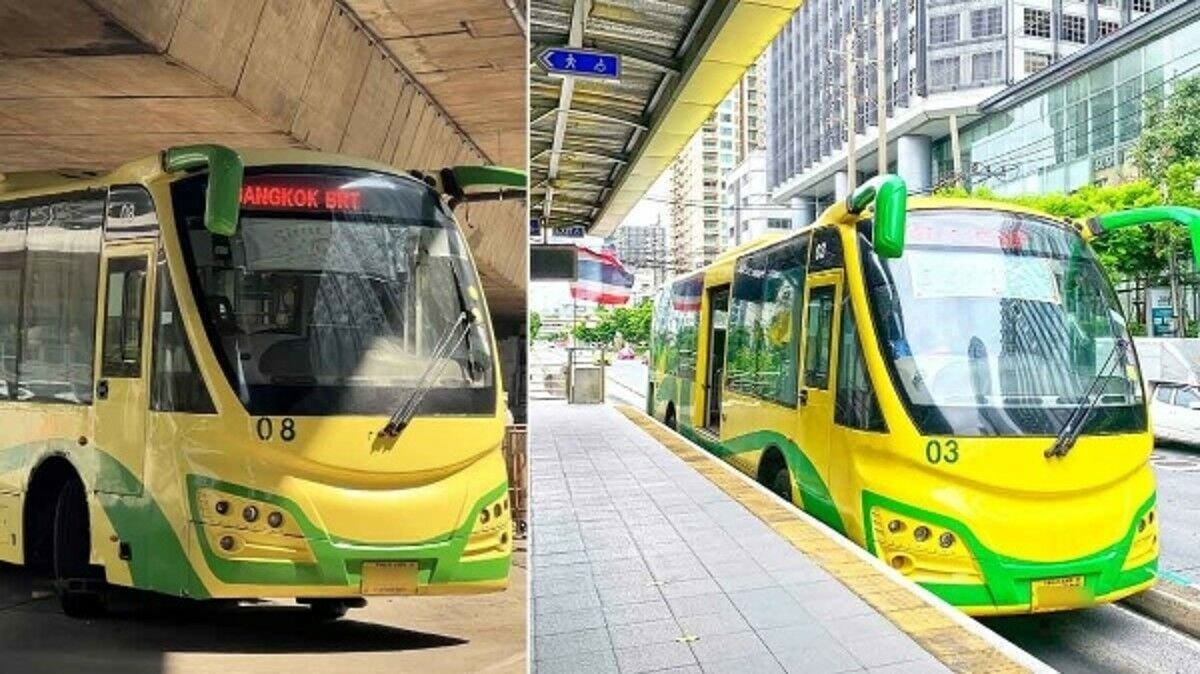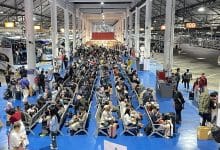Bangkok’s new electric BRT buses first day issues face backlash

Bangkok’s launch of its new electric BRT buses on the Sathorn-Ratchaphruek route sparked significant criticism online due to numerous issues on the first day of service. These problems include an insufficient number of buses, longer waiting times, and malfunctioning doors.
Bangkok Metropolitan Administration (BMA) Deputy Governor Wisanu Subsompon provided an update on the progress of the BRT (Bus Rapid Transit) system development yesterday, September 3. The new electric vehicle (EV) BRT buses started operations on September 1. However, several issues have drawn the ire of commuters.
The first major issue is the number of buses available. Out of an expected 23 buses, only 16 were in service, leading to inadequate capacity to meet public demand. This shortage of buses has caused significant inconvenience for passengers, especially during peak hours.
The second issue relates to the frequency of bus departures. The new schedule has buses departing every 12 minutes, compared to the previous interval of seven minutes. This change has resulted in longer waiting times for passengers, particularly during the busy morning and evening rush hours. The longer intervals are due to the limited number of buses, necessitating the adjustment to maintain a semblance of service.
The third major problem involves the new buses’ door mechanisms. The EV BRT buses are equipped with sensor-controlled folding doors designed to enhance safety. However, these sensors can be obstructed by objects or people, preventing the doors from closing properly while the bus is in motion. This safety feature has caused operational hiccups, leading to further delays and passenger frustration.
In addition to these primary concerns, there have been complaints about the inconvenience of boarding the new low-floor buses. Unlike the previous models that aligned with station platforms, passengers now have to step down to the pavement to board. This change has been particularly problematic as the uncovered walkways expose passengers to the elements. The Traffic and Transportation Department is currently seeking contractors to modify stations to better accommodate the new buses and construct covered walkways.
Inefficient service
Regarding the charging infrastructure for these electric buses, the Metropolitan Electricity Authority (MEA) has agreed to build a charging station at Chong Nonsi station. However, the construction has been delayed pending a legal review of the contract between MEA and the construction contractor. In the interim, the BMA has arranged to use Thai Smile Bus’s charging station on Rama 3 Road, although this is less convenient due to the limited number of charging points and the need to book slots in advance.
The Facebook page Footpath Thai Style posted live updates and images showing long queues at Sathorn station, with many passengers expressing frustration. One commenter noted that they felt exhausted from work, only to face additional stress due to the chaotic queue situation. Other comments highlighted frequent bus breakdowns, malfunctioning doors, and private vehicles utilising BRT lanes, which slowed down bus operations and caused unpredictable waiting times.
Questions have been raised about the preparedness of the new BRT service. Critics wonder why thorough checks were not conducted before the launch to ensure the system’s readiness. The lack of backup buses, when breakdowns occur, has exacerbated the situation, leading to even longer queues and insufficient service capacity. The current 12-minute interval between buses is seen as inadequate compared to the previous system, which had a higher number of buses, greater passenger capacity, and shorter intervals between departures.
Some passengers, however, have pointed out that the current issues may be exacerbated by the free trial period, which has attracted a large number of users. This could be contributing to the overcrowding and the perception of insufficient service.
Despite the initial setbacks, the BMA is working to resolve these issues and improve the BRT service. The adjustments and improvements are expected to take some time before the system can operate smoothly and meet the public’s expectations, reported KhaoSod.
Latest Thailand News
Follow The Thaiger on Google News:


























